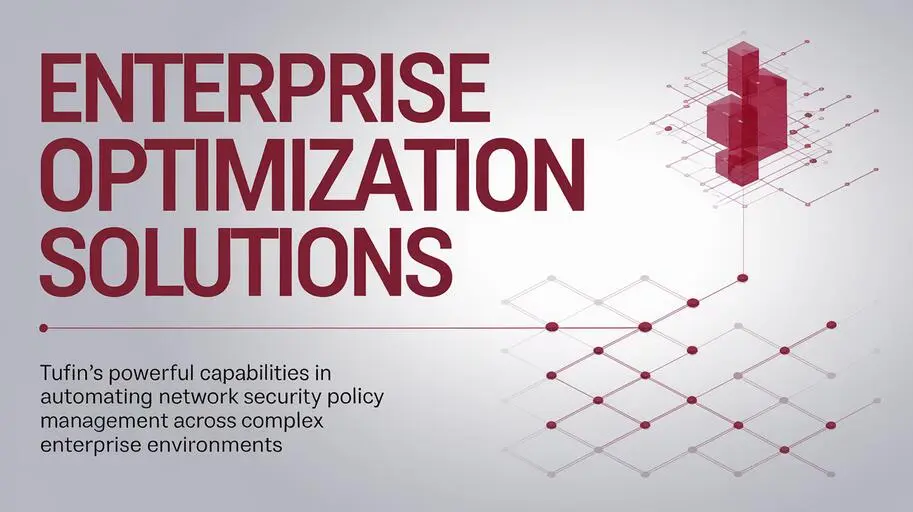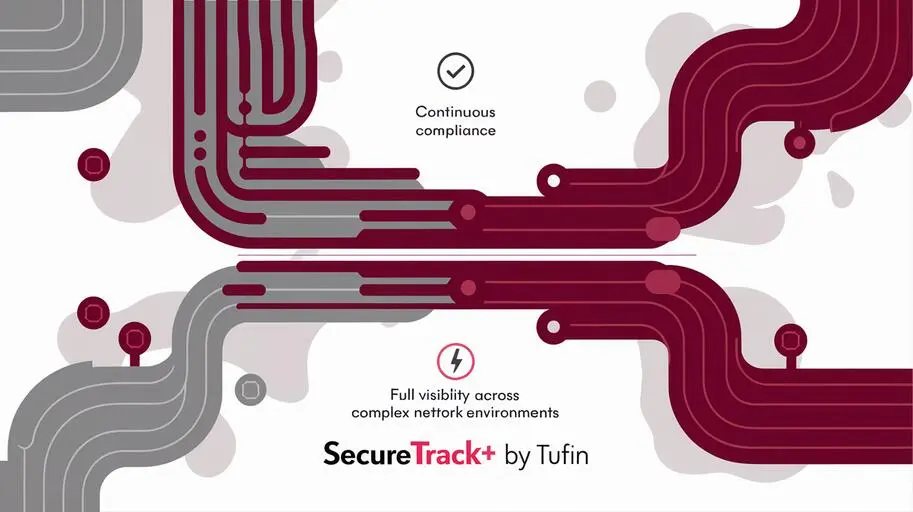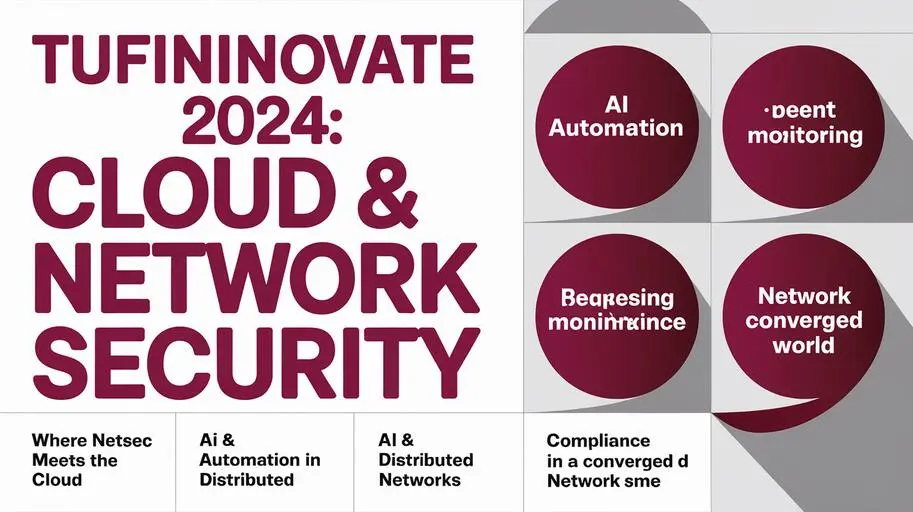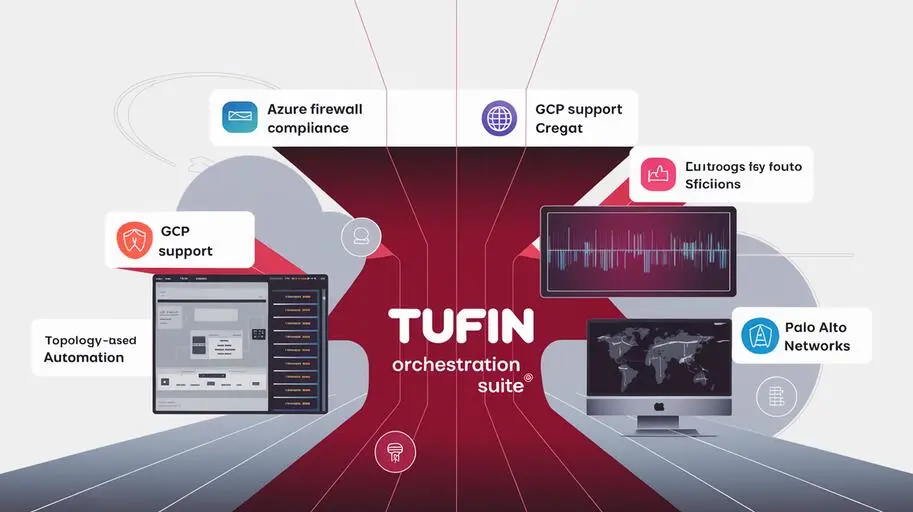
In today’s dynamic world, where network infrastructure is becoming increasingly complex and distributed, manual change management is becoming a source of serious problems. Configuration errors, deployment delays, non-compliance with security requirements – these are just some of the challenges faced by IT professionals. Manually managing network change processes takes a huge amount of time, increases the risk of configuration errors, and negatively affects the overall security of the IT infrastructure, making it difficult to respond promptly to changing business needs and new threats.
Automating network changes is a necessity, not a luxury. Tufin offers a platform that allows organizations to simplify, automate, and orchestrate network security policy management processes throughout the entire change lifecycle, from planning to implementation and rollback. Instead of simply listing Tufin’s capabilities, we will look at the problems it solves and how it does it, providing specific examples and technical details.
Benefits of Network Change Automation
Implementing an automation solution, such as Tufin SecureChange, does not simply optimize individual tasks, but fundamentally changes the approach to network infrastructure management. Here are the key benefits, supported by examples:
- Reduced Change Implementation Time: Faster Time to Market by automating workflow and approval processes.Example: Instead of several days for manual configuration, changes are implemented in minutes thanks to automated workflows and integration with network device APIs.
- Reduced Risk of Errors: Minimizing human error and related errors through automated checks and validation.Example: Automatic rule correctness checks and compliance validation eliminate configuration errors that often occur with manual management.
- Enhanced Security: Improved compliance through process standardization and automatic application of network security policies.Example: Standardization of processes allows you to quickly identify and eliminate deviations from security policies, such as unauthorized port openings.
- Improved Compliance: Compliance with regulatory requirements, thanks to built-in audit reports and automated compliance checks.Example: Automatically generating PCI DSS compliance reports, including a breakdown of the requirements that have been checked automatically, greatly simplifies the audit process.
- Resource Optimization: Reducing manual labor costs and improving the efficiency of DevOps and security teams.Example: Automation can reduce the time to process change requests by 50%, freeing up resources for other tasks.
Tufin SecureChange: Network Change Automation in Detail
Tufin SecureChange is Tufin’s flagship product, providing comprehensive network change automation and network security management. It allows organizations to centrally manage firewall, router, and other network device policies, ensuring consistency, security, and compliance.
Key Features of Tufin SecureChange
- Automated Workflow for Changes: Configure and automate workflows for change requests, approvals, implementation, and verification.
- Automated Risk Analysis: Identify potential risks associated with proposed changes before they are implemented.Example: SecureChange analyzes risks related to compliance (e.g., PCI DSS), vulnerabilities (CVE), and potential security policy violations.
- Automated Rule Generation: Automatically creates optimal firewall rules based on specified parameters and network security policies.
- Automated Change Implementation: Automatically deploys changes to various network devices, minimizing manual labor and the risk of errors.Important: Role-Based Access Control (RBAC) ensures security and control during change implementation.
- Automated Change Rollback: Quickly and safely restore the previous configuration in case of problems.
- Integration with Various Vendors: Support for a wide range of firewalls and routers from leading manufacturers such as Cisco, Fortinet, Palo Alto Networks, and Check Point.Integration Protocols: API, SSH, NetConf.
Tufin Solution Architecture for Network Change Automation
The Tufin solution architecture is designed to ensure high scalability and reliability. It consists of the following main components:
- Tufin Orchestration Suite (TOS): A central management platform that provides a single point of control for all network change automation processes.How TOS Works: TOS provides a single point of control by aggregating information via APIs from SecureTrack, SecureChange, and Connectors.
- SecureTrack: Used to track network status and perform audit and compliance tasks.Important: SecureTrack collects logs (Syslog, NetFlow, sFlow, IPFIX, etc.) to analyze traffic and identify anomalies.
- SecureChange: Responsible for automating change workflows, analyzing risks, and implementing changes.
- Connectors: Provide integration with various firewalls, routers, and other network devices.Connector Types: API, SSH, CLI. Connectors provide support for various devices, including vendor-specific commands.
- API: Provides the ability to integrate with other systems and tools, such as CI/CD pipelines and monitoring systems.Examples of API Usage: Automating change requests, retrieving network status information (REST, SOAP).
Tufin Integration with Cloud Platforms for Automation
Modern organizations are increasingly using cloud platforms such as AWS, Azure, and GCP to deploy their applications and services. Tufin provides integration with these platforms, allowing organizations to centrally manage network security policies in both on-premises infrastructure and in the cloud.
Benefits of Integration with Cloud Platforms
- Unified Management: A single interface for managing network security policies in hybrid environments.How Tufin Provides Unified Management: Tufin provides unified management using the AWS Security Groups, Azure Network Security Groups, and GCP Firewall Rules APIs. This allows administrators to centrally manage security policies, regardless of where the resources are located.
- Automated Policy Enforcement: Automatically apply network security policies when creating new resources in the cloud.Example: Tufin automatically applies security policies when creating new EC2 instances in AWS, ensuring compliance from the start.
- Enhanced Security: Improved visibility and control over network security policies in cloud infrastructure.How Visibility is Improved: Tufin tools are used to monitor and analyze traffic in the cloud, identify anomalies and unauthorized changes.
- Simplified Compliance: Automate compliance processes in the cloud environment.
Tufin SecureApp: Automating Security Changes at the Application Level
In addition to automating network changes at the network level, Tufin also offers Tufin SecureApp, a solution for automating security changes at the application level. Tufin SecureApp allows organizations to automate security processes for new and existing applications, integrating network security information with the application development lifecycle.

Key Features of Tufin SecureApp
- Automatic Application Discovery: Automatically discover and classify applications, as well as their network dependencies.Application Discovery Methods: Traffic analysis, integration with CMDB.
- Application-Level Risk Analysis: Identify potential risks associated with applications before they are deployed.What Risks are Analyzed: Vulnerabilities in code, misconfiguration of applications, lack of encryption.
- Automated Security Policy Creation: Automatically create network security policies based on application requirements.
- Microsegmentation Management: Manage microsegmentation to restrict access to applications based on the principle of least privilege.How SecureApp Implements Microsegmentation: Integration with NSX, ACI.
Tufin Network Change Workflow Automation
Tufin SecureChange allows organizations to define and automate workflows for various types of network changes. This allows you to standardize processes, reduce change execution time, and minimize the risk of errors. Workflow automation helps DevOps and security teams respond faster to changes in the business and ensure the continuity of applications.
Example of an Automated Workflow
- The user requests a change in the network through the Tufin SecureChange portal.
- The request is automatically forwarded to the appropriate persons for approval.
- Tufin SecureChange automatically analyzes the risks associated with the proposed change.
- If there are no risks, Tufin SecureChange automatically generates the necessary firewall rules.
- Tufin SecureChange deploys changes to the appropriate network devices.
- Tufin SecureChange verifies the successful implementation of the changes and generates a report.
Important: Workflows can be configured and customized to meet the needs of a specific organization.Integration: Integration with ITSM systems (e.g., ServiceNow, Jira) to automate change requests.
Risk Assessment and Compliance with Tufin
Tufin helps organizations assess the risks associated with network changes and ensure compliance with various standards and regulations. Tufin SecureChange automatically analyzes proposed changes for compliance with network security policies and identifies potential vulnerabilities.
Risk Assessment and Compliance Capabilities
- Automated Risk Analysis: Automatic analysis of proposed changes to identify potential risks and vulnerabilities.
- Integration with Vulnerability Databases: Integration with vulnerability databases to identify known vulnerabilities in the network infrastructure.Examples of Vulnerability Databases: NIST National Vulnerability Database.
- Compliance Reports: Automatically generate reports on compliance with various standards and regulations, such as PCI DSS, HIPAA and GDPR.Examples of Reports: PCI DSS compliance report, GDPR compliance report. What specific sections of the standards are checked automatically?
- Change Audit: Detailed audit of all changes made to the network infrastructure, indicating who, when, and why the changes were made.Audit Security Questions: How is the integrity of audit data ensured? How long are audit records stored?
Tufin Integration with CI/CD Pipelines
In modern DevOps environments, integration with CI/CD pipelines is a key success factor. Tufin provides integration with CI/CD pipelines, allowing organizations to automate security processes throughout the application development lifecycle.
Benefits of Integration with CI/CD
- Security-as-Code: Providing the ability to define network security policies as code and manage them in a CI/CD pipeline.Examples of Security-as-Code with Tufin: Writing security policies in YAML and automatically applying them in the CI/CD pipeline.
- Automated Security Checks: Automatically perform security checks at each stage of the CI/CD pipeline.What Types of Security Checks are Performed: Static code analysis, dynamic code analysis, penetration testing. What tools are used for these checks?
- Rapid Identification and Elimination of Vulnerabilities: Rapid identification and elimination of vulnerabilities in the early stages of development.
- Increased Security and Development Speed: Simultaneously increasing the security and speed of application development.
Tufin integrates with CI/CD at the stages of:
- Planning and Development: Risk analysis and creation of security policies.
- Testing: Automated Security checks.
- Deployment: Automatic application of security policies.
Benefits of Network Change Automation for Business with Tufin
Automating network changes brings not only technical benefits, but also significant benefits for the business as a whole. The Tufin solution allows organizations to:
- Reduce Costs: Reduce manual labor costs, reduce the number of errors, and increase the efficiency of IT personnel.Example: Automation has reduced the time to process change requests by 50%, freeing up resources for other tasks.
- Accelerate the Implementation of New Services: Accelerate the implementation of new services and applications by automating security processes.
- Reduce Risks: Reducing the risk of security incidents and data leaks.Example: The implementation of Tufin has reduced the number of incidents related to misconfiguration by 80%.
- Improve Compliance: Improving compliance with various standards and regulations, which avoids fines and penalties.
- Increase Competitiveness: Increasing the flexibility and adaptability of the business by being able to quickly respond to changes in the market environment.
Implementing Tufin SecureChange allows companies of any size to optimize processes, reduce risks, and gain a competitive advantage in today’s digital world.
FAQs on: Automating Network Changes with Tufin
-
What is Tufin and what problem does it solve?
Tufin is a platform that automates network security policy management. It helps organizations simplify, automate, and orchestrate security management processes throughout the entire change lifecycle, from planning to implementation and rollback, addressing manual management challenges such as errors, delays, and non-compliance with security requirements.
-
What are the main benefits of automating network changes with Tufin?
Automation with Tufin helps reduce change implementation time, lower the risk of errors, enhance security, improve compliance, and optimize resources, including reducing manual labor costs.
-
What is Tufin SecureChange and what are its main capabilities?
Tufin SecureChange is Tufin's flagship product for comprehensive network change automation and network security management. It provides automated workflows for changes, risk analysis, rule generation, change implementation and rollback, and integration with various network equipment vendors (Cisco, Fortinet, Palo Alto Networks, Check Point).
-
How does Tufin integrate with cloud platforms (AWS, Azure, GCP)?
Tufin provides integration with cloud platforms, enabling centralized management of network security policies in both on-premises infrastructure and in the cloud. This ensures unified management, automatic policy enforcement, increased security, and simplified compliance in hybrid environments.
-
What is Tufin SecureApp and what function does it perform?
Tufin SecureApp automates security changes at the application level. The solution allows organizations to automate security processes for new and existing applications, integrating network security information with the application development lifecycle, including automatic application discovery, risk analysis, and security policy creation.
-
How does Tufin automate network change workflows?
Tufin SecureChange allows organizations to define and automate workflows for various types of network changes, standardizing processes, reducing change execution time, and minimizing the risk of errors. This includes automated request routing for approval, risk analysis, rule generation, and change deployment.
-
How does Tufin help in risk assessment and compliance?
Tufin helps assess the risks associated with network changes and ensure compliance with various standards and regulations. This includes automated risk analysis, integration with vulnerability databases, generation of compliance reports (PCI DSS, HIPAA, GDPR), and change auditing.
-
How does Tufin integrate with CI/CD pipelines?
Tufin provides integration with CI/CD pipelines, enabling automation of security processes throughout the application development lifecycle. This allows you to define security policies as code, automate security checks at each stage of the CI/CD pipeline, and quickly identify and resolve vulnerabilities.
-
What business benefits does automating network changes with Tufin bring?
Automation with Tufin helps reduce costs, accelerate the deployment of new services, reduce risks, improve compliance, and increase business competitiveness.
-
What is the architecture of the Tufin solution?
The Tufin architecture includes the Tufin Orchestration Suite (TOS) as a central management platform, SecureTrack for network state tracking and auditing, SecureChange for automating change workflows, connectors for integration with network devices, and APIs for integration with other systems.




